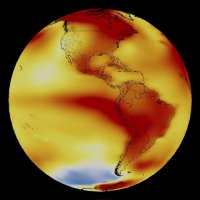
NASA Climate
@nasaclimate
Understanding our planet to benefit humankind.
Verification: nasa.gov/socialmedia
ID: 15461733
http://science.nasa.gov/climate-change 17-07-2008 00:15:45
7,7K Tweet
343,343K Followers
116 Following








Sea ice update 🌊🧊 Global sea ice hit a record low this winter, NASA and National Snow and Ice Data Center report. In the Arctic, winter sea ice was the lowest it’s ever been at its annual peak this year. The Antarctic sea ice minimum was also the second-lowest on record. More: go.nasa.gov/4j4KpuV




